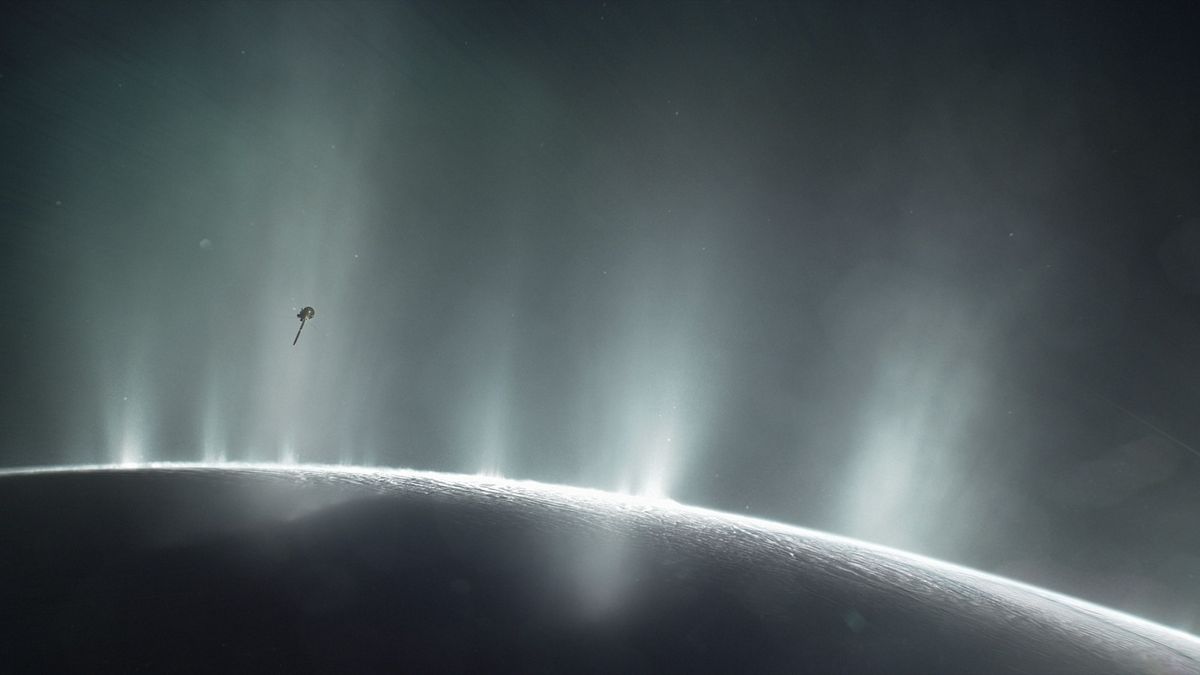James Webb telescope discovers gargantuan geyser on Saturn's moon, blasting water hundreds of miles
James Webb telescope discovers gargantuan geyser on Saturn's moon, blasting water hundreds of miles into space
By Isobel Whitcomb published 5 minutes ago
The James Webb Space Telescope caught Saturn's icy moon Enceladus spraying a 'huge plume' of watery vapor far into space — and that plume may contain chemical ingredients for life.

An illustration of NASA's Cassini orbiter soaring through a giant vapor jet over the moon Enceladus (Image credit: NASA/JPL-Caltech)
Scientists caught Saturn's icy moon Enceladus spraying a "huge plume" of watery vapor far into space — and that plume likely contains many of the chemical ingredients for life.
Scientists detailed the eruption — glimpsed by the James Webb Space Telescope (JWST) in November 2022 — at a conference at the Space Telescope Science Institute in Baltimore on May 17.
"It's immense," Sara Faggi, a planetary astronomer at NASA's Goddard Space Flight Center, said at the conference, according to Nature.com. According to Faggi, a full research paper on the massive plume is pending.
This isn't the first time scientists have seen Enceladus spout water, but the new telescope's wider perspective and higher sensitivity showed that the jets of vapor shoot much farther into space than previously realized — many times deeper, in fact, than the width of Enceladus itself. (Enceladus has a diameter of about 313 miles, or 504 kilometers.)
More:
https://www.livescience.com/space/extraterrestrial-life/james-webb-telescope-discovers-gargantuan-geyser-on-saturns-moon-blasting-water-hundreds-of-miles-into-space
